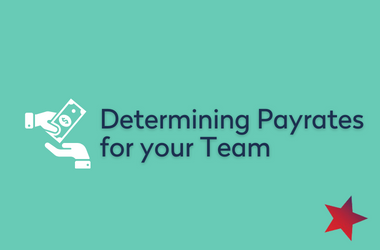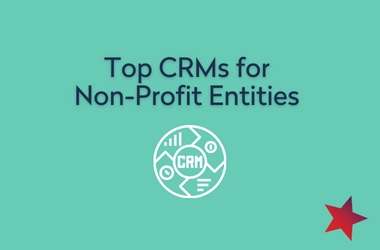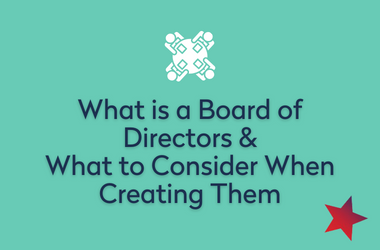Employee vs. Independent Contractor
What’s the difference between an employee and an independent contractor?
The payment for an independent contractor is performance-based and is determined by the completion of the service they provide while an employee‘s payment is determined by an hourly rate or salary that does not change based on the review of their performance.
Taxes are not generally withheld from an independent contractor‘s fee, and they are responsible for paying their own income taxes and insurance. Employees have taxes automatically withheld from their paycheck and have those categories overseen by their employer.
While employees are given position descriptions, independent contractors are given a written contract describing the scope of their work.
An employee does not provide their tools and supplies for a task while an independent contractor does.
An employee has their income payment controlled through the employer as well as reimbursements, pension pay, and vacation plans while an independent contractor does not and they create the fee for the service they provide and are invoiced.
Taxes and IRS Reporting
While the federal department of labor and state laws have definitions for employees and independent contractors, the IRS definitions are the main ones to look at.
The IRS uses Publication 15-A, Employers Supplemental Tax Guide (58 total printed pages), while the Department of Labor uses a more generalized, two-page document. When it comes to official reports that record employees and independent contractors wages and work there are 1099s and W-2s. The 1099 reports are meant for independent contractors to see their records of wages and their payments to the IRS. The W-2s on the other hand are there to itemize the deductions for taxes that employees have as well as show their tax-based withholdings for the year.
What types of professions work as Independent Contractors?
In the professional services world, we know that lawyers, doctors, accountants, and others often provide their services to the general public as independent contractors. Depending on the nature of the working relationship and agreement, artists may also be similarly identified as independent contractors.
What is a typical independent contractor working relationship like?
Generally, independent contractors are those who are in business for themselves and control the “when, where, and how” of their work. When hiring an artist as an independent contractor or 1099 vendor, you as the company have little to no control over that individual. As the hiring party, all agreements and expectations need to be laid out in a well-drafted contract such as the working relationship, the contractor’s responsibilities and scope of services, the deadline of this project, as well as fees to be paid to them, and the 1099 to be issued to them. Keep in mind that you need only issue a 1099 if the contractor meets the $600 IRS threshold for the tax year.
Factors Determining the Independent Contractor Classification
So how can you determine if an artist should be classified as an independent contractor? Several cumulative factors are to be considered:
- Discretion as to how to produce a product or service
- Not subject to supervision
- Self-schedules subject only to the project deadline
- May provide their services to other like-competing organizations
- Invests in their tools, equipment, and supplies
- Submits an invoice for their services
Many laws dictate the classification of independent contractors
Federal, state, and local laws all attempt to define the boundaries by which an individual should be classified as an independent contractor; however, these laws can change over time and should be referenced based on the organization’s state of establishment. For example, New York State does not exactly define who is an employee and who is an independent contractor; rather the New York State Department of Labor has issued guidance, drawing awareness to the numerous factors that must be considered and you, as the hiring party, should ask yourself several key questions when classifying the worker. For example, how many hours do they work, and who sets those hours? Is the work directly supervised? How is compensation provided, and are business/travel expenses reimbursed? Are there any fringe benefits to be provided? To stay compliant with federal, state, and local requirements, contemplate your working relationship with the individual as well as how their services best support your organization. Do consult legal and tax professionals along the way to help guide your decisions about hiring independent contractors.
Next Steps:
Curious about tax implications of classifying your performers as employees vs independent contracts? Learn why it matters.
Drafting up an independent contractor agreement? Find a Pentacle-approved template here.
Related Resources
Determining Pay Rates for Your Team
Considerations for Determining Pay RatesDetermining How Much to Pay Your Team Pentacle recommends using the W.A.G.E. calculator to get a sense for how much established institutions are paying for artistic services. Employers can also input their annual budget to see a...
Top CRMs for Non-Profit Entities
Top CRMs for Non-Profit EntitiesSalesforce Salesforce is a widely used CRM system that offers robust features and customization options. Nonprofits can use Salesforce's Nonprofit Success Pack (NPSP), which includes features tailored to the needs of nonprofit...
What is a Board of Directors and What to Consider When Creating One
What is a Board of Directors and What to Consider When Creating OneWhat is a Board of Directors? A board of directors is a group of individuals who are elected to govern and oversee the organization’s operations. The board is responsible for setting the organization’s...



